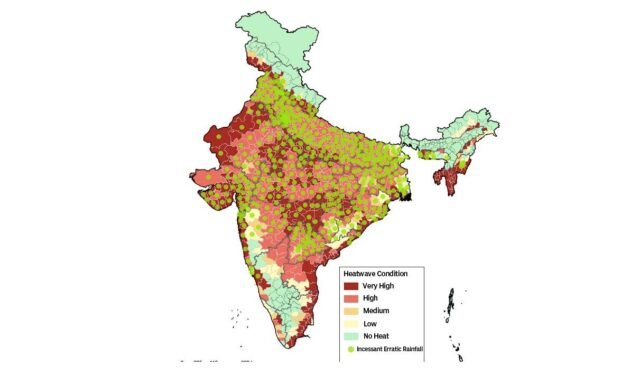Hyderabad: Hyderabad will be in the middle of the crosshairs of climate change-driven events and can expect a 43% rise in heatwave days, as well as days of incessant rains by 2030, just five years from now. And that this possibility exists was acknowledged by the Centre, which informed the Lok Sabha that the Union government was aware of a scientific report which reveals that “by 2030, climate change is expected to drive a 43% rise in the intensity of extreme rainfall events across India, making the country hotter and wetter.”
The report that Union Minister of State for Science and Technology Dr Jitendra Singh referred to in his reply to a question posed by AIMIM president and Hyderabad MP Asaduddin Owaisi on extreme weather events was prepared by Esri India and IPE Global.
The report ‘Weathering the Storm: Managing Monsoons in Warmer Climate’, reveals that by 2030, climate change is expected to drive the predicted rise in intensity of extreme rainfall events across India, making the country hotter and wetter. And joining Hyderabad to face this prospect will be other big and small cities in India including Mumbai, Chennai, Delhi, Surat, Thane, Patna and Bhubaneswar, which the report said “are projected to witness two-fold increase in heat wave days. (These) extended heat wave conditions are likely to trigger more frequent, and incessant and erratic rainfall events.” The report further pointed out that eight out of 10 districts in India are “going to experience multiple instances of incessant and erratic rainfall by 2030.”
Typically, the incessant rainfall events have been observed during the October and November months in the past and the study says that its findings align with previous studies which confirmed that these two months have become wetter in recent decades. The study said that with monsoon onsets making headlines “for being delayed or abrupt, erratic or furious and harsher,” and with “El Niño becoming stronger, there is a high probability of incessant and erratic rainfall events.”
And extreme heatwave hotspots have been witnessing an increase in the intensity and frequency of rainfall events, and “more than 84 per cent of districts are extreme heatwave hotspots, of which around 70 per cent have witnessed incessant and erratic rainfall more recurrently in the last three decades in the monsoon season from June to September.”
With the study indicating that heatwave days are nearly set to double in Hyderabad in the next few years, the city could well see an increase in intense and incessant rain spells not too in the near future.






